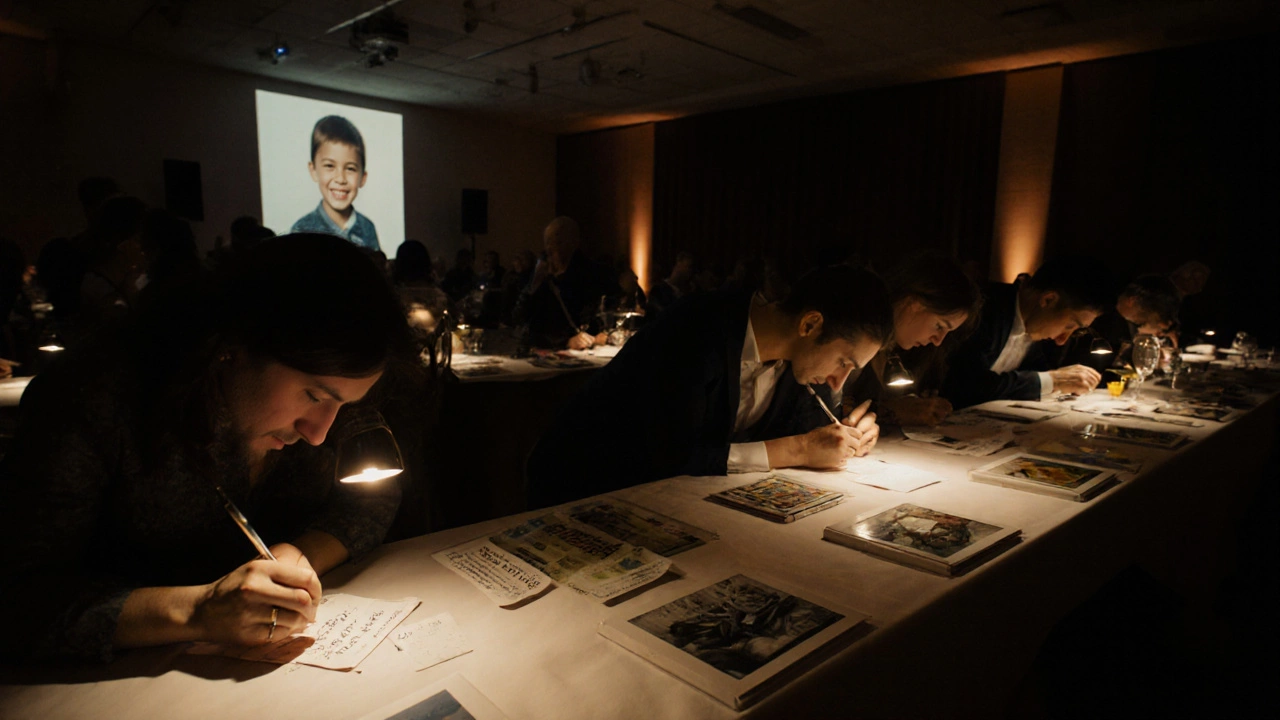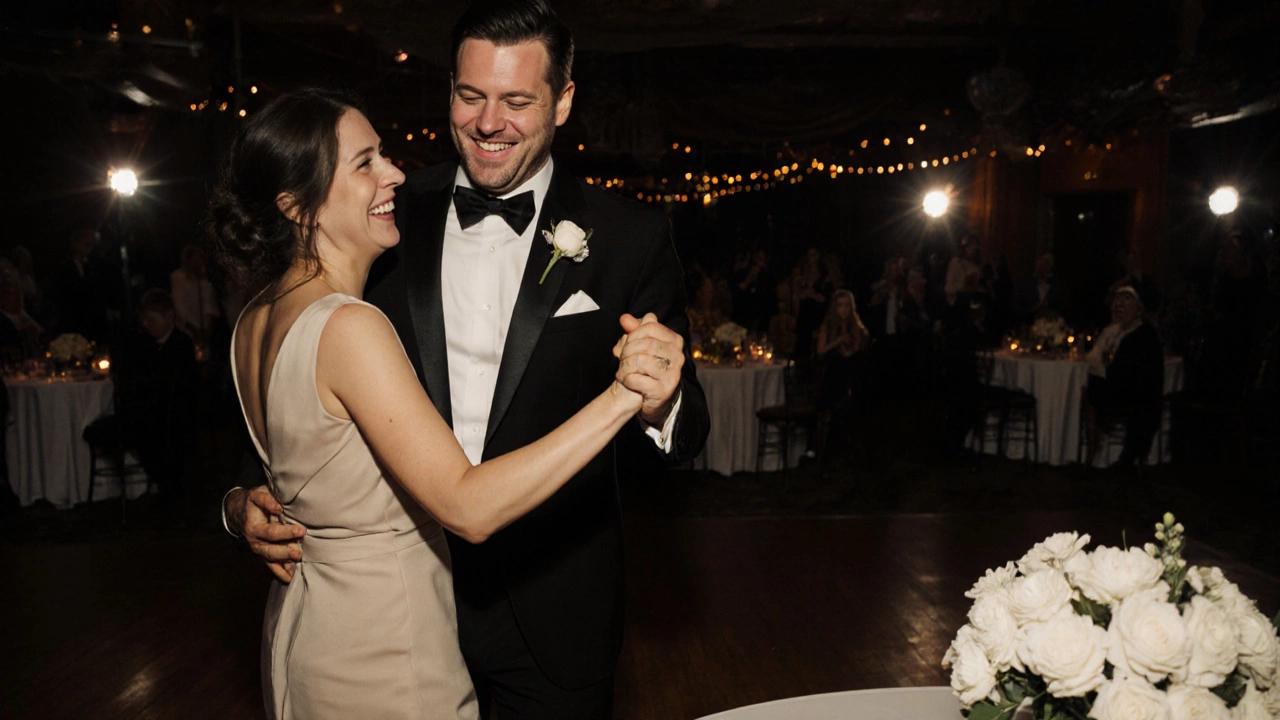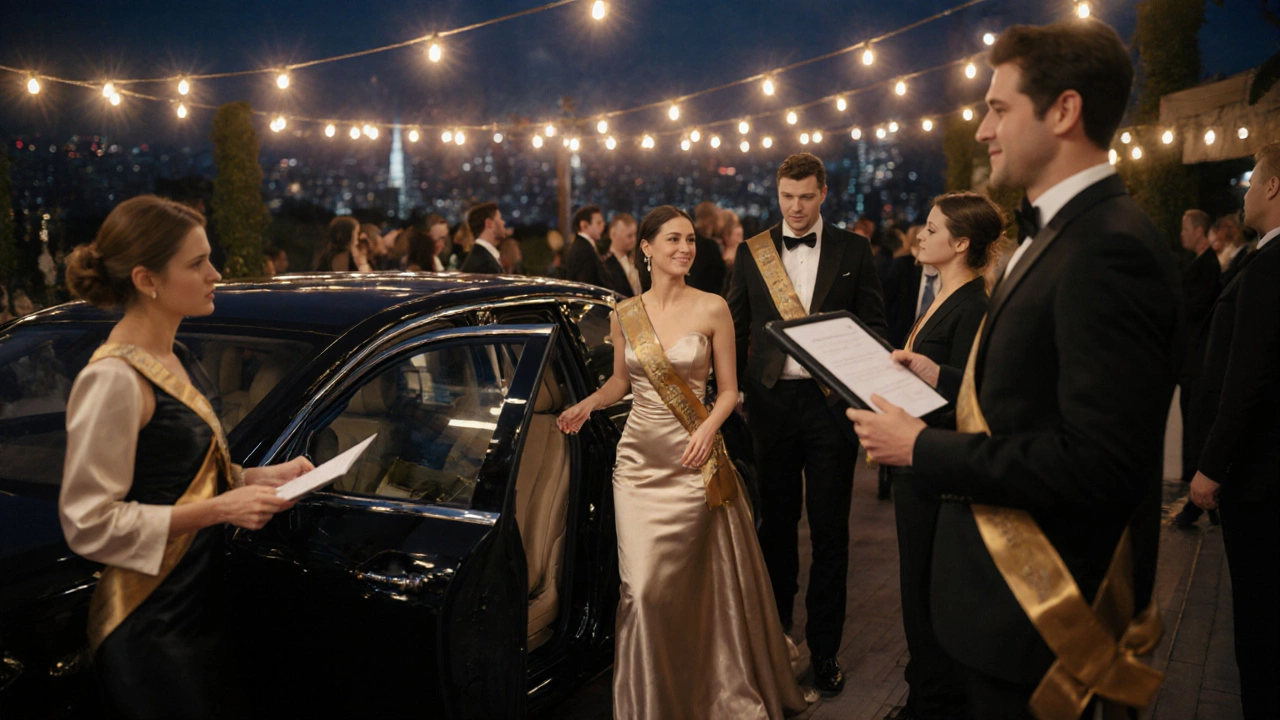Silent Auction Impact Calculator
How Your Bid Makes a Difference
At charity galas, silent auction bids aren't just about winning items—your contribution supports real change. This calculator shows what your bid actually funds for the cause.
Your bid makes a difference
$0.00
This is what your donation supports
Charity galas aren’t just fancy dinners with fancy clothes. If you’ve ever been invited to one and wondered what actually happens beyond the cocktails and the auction, you’re not alone. These events look glamorous from the outside, but inside, they’re tightly run machines designed to raise money, build relationships, and tell powerful stories - all while people eat, dance, and connect. Here’s what really goes on at a charity gala, from the moment guests walk in to the last goodbye.
Arriving in Style - But Not Just for the Outfit
People show up dressed to impress. Silk gowns, tailored tuxedos, designer heels - it’s easy to assume it’s all about status. But the clothing? It’s a signal. It tells the organizers, the donors, and the cause that this person is here to take it seriously. You won’t see people in jeans at a gala for a children’s hospital or a wildlife rescue. The dress code isn’t just tradition - it’s part of the experience. It signals respect for the cause and for the people who’ve worked hard to make the night happen.As guests arrive, they’re greeted by volunteers in matching sashes, handed programs, and often asked to sign in. That sign-in isn’t just for a name tag. It’s how the charity tracks who’s there, who’s given before, and who might be ready for a deeper connection. Some events even have a digital check-in system that links to their donor database in real time.
The Silent Auction - Where the Real Money Starts
Before dinner even starts, the silent auction is already buzzing. Tables are lined with items: weekend getaways, signed memorabilia, private chef dinners, art pieces, even a chance to ride in a vintage fighter jet. People browse, whisper to friends, and quietly write bids on slips of paper. But here’s what most outsiders don’t see: the auction isn’t random. Every item is chosen because it appeals to the donor base. A luxury spa package? That’s for the women who’ve donated $5,000+ before. A fishing trip with a local celebrity? That’s for the men who’ve funded equipment for youth sports.People don’t just bid because they want the item. They bid because they want to feel like they’re part of something bigger. A bid of $1,200 for a weekend cabin isn’t about the cabin - it’s about knowing that $1,000 of that goes straight to funding therapy for trauma survivors. That’s the unspoken rule of the silent auction: you pay for the story, not the object.
Dinner - More Than Just Food
When the lights dim and the first course arrives, the room quiets. This is when the real storytelling begins. A short video plays - maybe a child who got a new prosthetic limb, a family who escaped homelessness, a rescued sea turtle back in the ocean. These aren’t polished commercials. They’re raw, real, and under three minutes. That’s intentional. People’s attention spans are short, but their hearts aren’t.Then comes the speaker. Not a celebrity, not a politician - usually a beneficiary. A teen who got scholarships through the charity. A nurse who runs the mobile clinic. A single mom who found housing after years on the street. They don’t beg. They don’t ask for pity. They tell their story like it’s just another Tuesday. And that’s what makes it powerful. Guests aren’t being manipulated. They’re being invited in.
The food? It’s good. Often gourmet. But no one’s there for the truffle risotto. They’re there because the person next to them just told them how their donation last year bought 300 school uniforms. That’s the real meal.

The Live Auction - The Emotional Peak
After dessert, the lights lower again. A professional auctioneer takes the stage. This is where the big money moves. A donor might stand up and say, “I’ll match the next $50,000.” The room holds its breath. Someone yells, “$15,000!” Another voice jumps in: “$18,000!” The auctioneer doesn’t just call out numbers - he builds momentum, tells the story behind the item, and reminds people what it means. A trip to Bali? It’s not just a vacation. It’s a reward for a teacher who’s worked 12-hour days for 20 years. A painting by a local artist? It’s funding art therapy for kids in foster care.People don’t just bid because they’re competitive. They bid because they want to be the one who made the difference that night. And sometimes, they do - $50,000 for a single item isn’t rare at a well-run gala.
Networking - The Quiet Engine
While the auction rages, people are also talking. Quietly. Intently. A tech executive meets the head of a nonprofit. A retired doctor talks to a young entrepreneur who just launched a mental health app. These aren’t random chats. They’re connections. Charity galas are one of the few places where people who have resources meet people who have deep knowledge of need. That’s how new partnerships form. That’s how grants get approved. That’s how a small local group becomes a national movement.You’ll hear phrases like, “I’ve got a contact at the bank who might fund this,” or “My sister runs a foundation - I’ll introduce you.” These conversations don’t happen at LinkedIn events or business mixers. They happen here, over wine, after a touching story, when people feel safe to be generous.

Dancing - Because Joy Matters Too
By 9:30 p.m., the room shifts. The auction ends. The speeches are done. The band starts playing. People move to the dance floor. This isn’t just a party - it’s a reset. After hours of emotional intensity, dancing lets people release tension. It says: we’re not just here to give money. We’re here because we care. We’re here because we believe in joy, in community, in hope.And that’s when the real magic happens. A CEO who’s never danced in public twirls with a volunteer who’s been working the food drive for five years. A teenager who got her first laptop through the charity dances with her mentor. These moments aren’t planned. But they’re the reason people come back year after year.
Leaving - With a Receipt and a Purpose
As people head out, they’re handed a thank-you card and a tax receipt. That’s standard. But the best galas do one more thing: they send a follow-up email within 48 hours with a short video of the beneficiary who benefited from their gift. “This is Maria. She got her new wheelchair because of you. Here’s her first day at school.” That’s not just good practice. It’s what keeps donors loyal.People don’t leave charity galas thinking, “That was a nice night.” They leave thinking, “I was part of something that changed lives.” And that’s why they come back.





